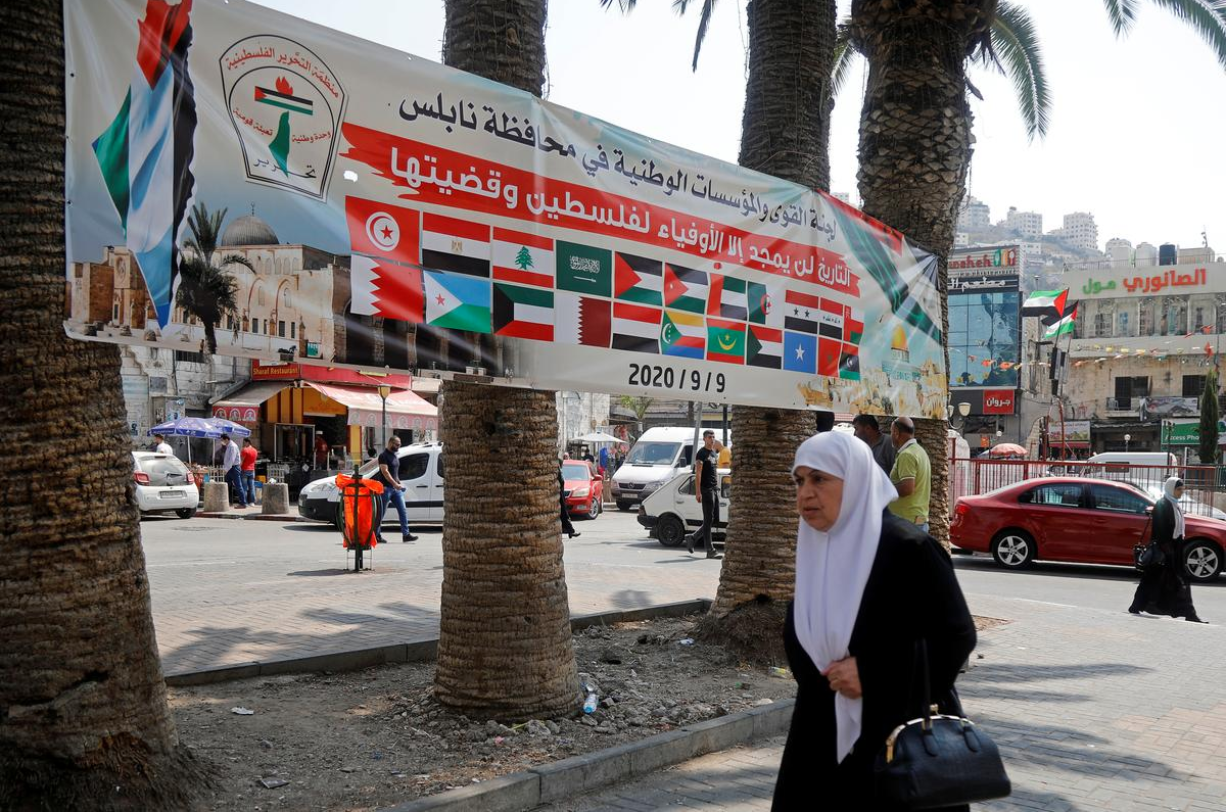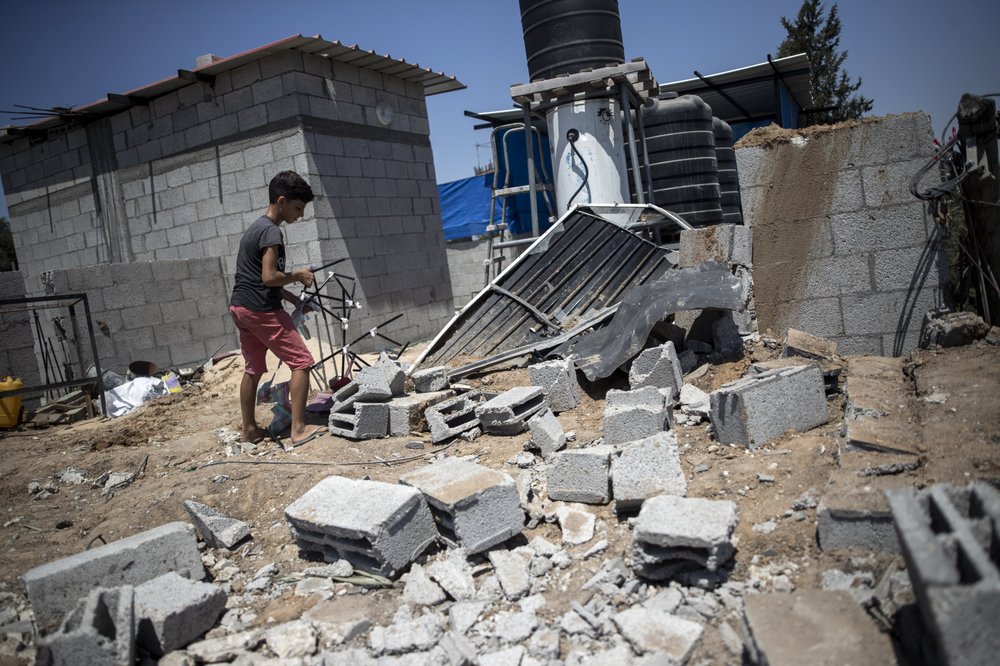The calorie is a crucial measurement in our self-imposed scrutiny of the body. As a recently released Israeli government document shows, it is also an instrument of rule.
After a two-year legal battle, the Israeli human rights organization Gisha has secured the release of “Food Consumption in the Gaza Strip — Red Lines.”
Measurement obsession
In September 2007, after Hamas took control of Gaza, the Israeli cabinet restricted the passage of goods, fuel and people to and from the strip. Prepared in January 2008, “Red Lines” prescribes the “humanitarian minimum” of this policy.
In implementing the siege on Gaza, Israeli officials sought to allow “for subsistence without the development of malnutrition.” “Red Lines” is a poignant reminder of how that measurement, the calorie, works as a tool of exclusion and political containment.
In 1896, in a Wesleyan University basement, Wilbur Atwater invented the calorimeter. He provided the budding science of nutrition with a powerful technology that rendered food “politically legible.”
The early 20th century witnessed the rise of an obsession with making economy visible and measurable. Similar to indices such as the cost of living and the gross domestic product, the calorie was a crucial mechanism in this effort to calculate production, consumption and productivity.
The calorie enabled the calculation of the minimum needs required for maximum productivity. Scientists and economists presented the calorie, like other measurements, as an objective universal standard that would ultimately facilitate development and overall benefit.
But the historical origins of the calorie, as well as its ongoing role as an instrument of governance, reveal how the “universal” functions to exclude and categorize people. When the League of Nations’ technical commission set the “optimum standard” for nutrition in 1938, they adjusted the levels of proteins, fats and carbohydrates down from higher Western standards due to the “dietary habits” of people in the Middle and Far East, who were deemed “less active.”
The history of the calorie also reveals a less obvious imperative of measurement: political containment. Economists and nutritionists in the US first configured the “cost of living” index in the late 19th century, when labor organizing was at its height.
It was not the promise of economic amelioration that drove these efforts. The determination of basic subsistence was crucial to ending labor unrest and maintaining social hierarchy.
Economic warfare
It is this volatile mix of bodily surveillance and political containment that explains the Israeli policy laid out in “Red Lines.”
By measuring calories, alongside the weight of food, and factoring in age and gender differences, the Israeli security establishment and health ministry together translated Gazans’ “daily humanitarian portion” into numbers of trucks delivering food to the strip. Israeli officials instituted “economic warfare” to contain Gazans and incite them against Hamas.
The Coordinator of Government Activities in the Territories, which monitored and approved every kind of food that entered Gaza, argues that “Red Lines” was merely a draft; it was never the basis for policy.
Such a contention is hard to stomach when the quotas on goods coming into Gaza matched the document’s calculations.
In fact, the quantities that were eventually cleared to enter were smaller than the “daily humanitarian portion” of the “Red Lines.” The aim, in the words of one COGAT official, was: “No prosperity, no development, no humanitarian crisis.”
As a result of the blockade, Gazans suffered shortages in basic products such as flour and sugar. This coincided with an alarming rise of unemployment from 26.4 percent in 2007 to 45.4 percent in 2008, and an increased dependence on aid, from 63 percent in 2006 to 80 percent in 2007.
A brief perusal of the historical record, most notably in Iraq and most recently in Iran, teaches us that economic sanctions consistently work to starve and kill civilians, particularly those without access to ruling elites. They are a brutal form of collective punishment. They impoverish most and enrich a few. They enable profiteering and unlikely alliances.
They give birth to new kinds of economic practices. And they reveal an important paradox of the last century’s fixation on measurement: it relies on what remains unmeasured. The so-called “informal” economy makes the formal one possible.
Bitter lemonade
Served Israel’s bitter lemons, Hamas made lemonade. Beginning with the blockade in 2007, the Hamas government turned the small tunnel trade into a “major commercial enterprise.” As Middle East analyst Nicholas Pelham shows, on the eve of Operation Cast Lead in December 2008, “tunnel trade revenue increased from an average of [US]$30 million/year in 2005 to $36 million/month.”
Rafah’s underground markets carry everything from basic goods to weapons. Weapons are a realm of commerce that both Egypt and Israel have paid close attention to. This August, Egypt destroyed numerous tunnels in response to a militant attack on Egyptian soldiers near Rafah.
Hamas’ vision of turning the tunnel trade into a formal free trade zone has found enthusiasm among Egyptian businesses, while the new Egyptian president, under US pressure, seems less receptive. Meanwhile, the Israelis have provided yet another performance of a long, if not so precise, arm, with the recent bombing of the Yarmouk military manufacturing facility in Khartoum.
Initially, the Rafah tunnels defied the logic of the calorie. Imports and supplies escaped measurement. In the narrow spaces between being subjects of Israeli occupation and objects of humanitarian aid, Hamas turned to free market capitalism.
As political economist Sara Roy pointed out during a lecture at The Palestine Center in Washington, DC, last month, local businesses are unable to compete with the underground trade. Gaza’s commercial class is marginalized and people are increasingly dependent on the Hamas government.
It is not coincidental, then, that once Hamas took control of the commercial tunnels in 2007, it began regulating, taxing and monitoring the underground markets. The government was quick to grasp that measurement is key to maintaining economic and political control.
Since the Mavi Marmara flotilla action in 2010, Israel has partially lifted its restrictions on the entrance of food to Gaza. But the use of indiscriminate pressure on the entire population continues to be the basis for the current policy.
Israel can and has turned the lights out on Hamas’ entrepreneurial innovations and Gaza’s 1.5 million residents with the flick of a switch. Given Israel’s complete control of airspace, territorial waters, infrastructure and the population registry, Gaza remains the world’s most overcrowded open-air penitentiary. And the lemonade is just too bitter.
Sherene Seikaly is an assistant professor of history, and director of the Middle East Studies Center at the American University in Cairo. She is a co-editor of the Arab Studies Journal, and co-founder and contributing editor of Jadaliyya e-zine.
This piece was originally published in Egypt Independent’s weekly print edition.




